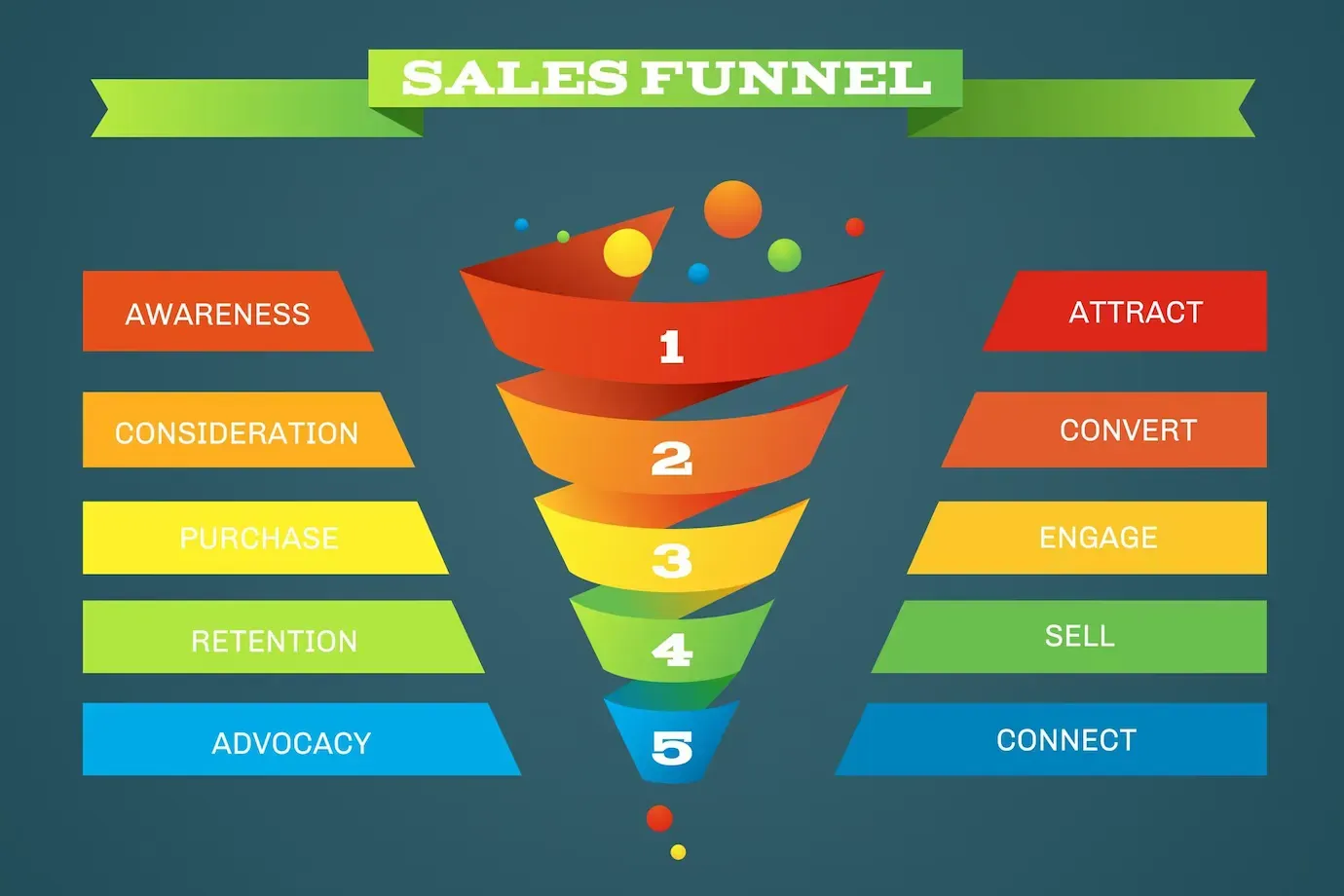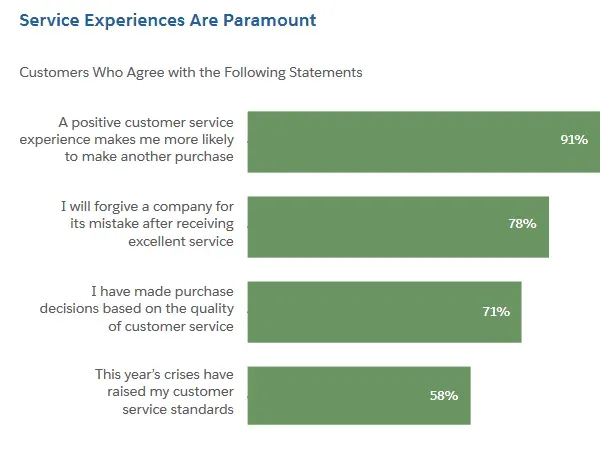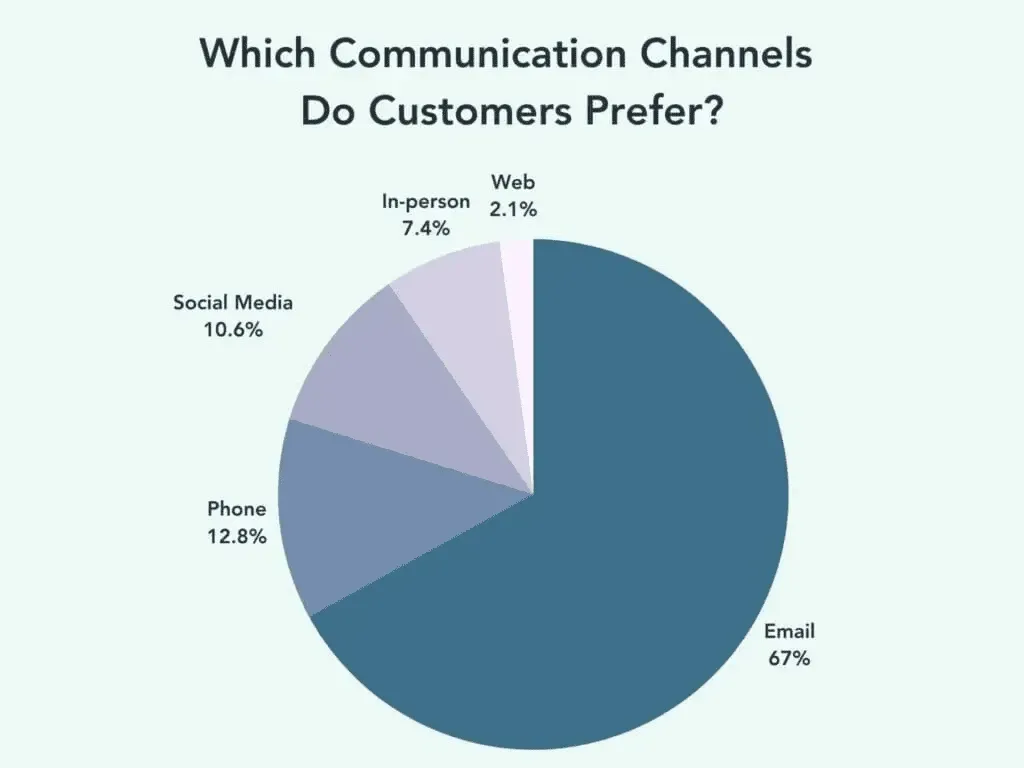In this article, you’ll learn:
In today’s markets, competition is fierce, and customers have never been so savvy. They know what they want, they're willing to do their research, and they vote with their wallets.
Whether someone is craving a nice meal, needs a new laptop, or requires an SaaS AI call center solution, customers have a whole world at their fingertips. They have an abundance of choices and masses of information to work with.
Modern businesses have to work hard to stand out, and one way to do that is through adopting customer-centric practices.
What does customer-centric mean?
Customer-centric means putting customers at the forefront of your business. From the top down, a customer-centric organization's main priority must be providing a positive customer experience.
We all want good customer service, to feel valued by the brands we’ve chosen, and to know we’re in good hands if something goes wrong. We want to be treated like human beings, not ATMs.
The fact is, we are much more likely to do repeat business with a company that treats us like a person, and it’s this concept that drives the success of customer-centric companies.
Modern customers have higher customer service expectations than ever before. Being a customer-centric company means consistently meeting those expectations at every stage of your customer’s journey.
It can help to consider the sales funnel. Customers begin their journey at the awareness stage, and you want to lead them all the way through to the advocacy stage. Where in the awareness stage can you appeal to their needs? What solutions can you offer that will take them from consideration to purchase?

This can often run counter to raking in short-term profits. Customer-centricity must become a company-wide value, and this doesn’t happen overnight -it takes time, resources, and commitment to see it through.
Because of this, becoming a customer-centric organization can feel like a huge undertaking that might not be worth it. Many businesses won’t benefit from customer-centric practices much at all, like monopolies that already have a huge market share.
But there are plenty of ways adopting customer-centric practices can make your organization stand out in an increasingly saturated market.
Benefits of customer-centric approach
Let’s talk in detail about all the advantages that a customer-centric approach can bring for the organizations.
Better customer retention
Both B2B and B2C customers are around 90% more likely to make repeated purchases from companies that offer a positive customer service experience. This proves that a good customer experience cuts down on churn and helps companies build a loyal customer base.
It appears that most people are willing to become returning customers based on their personal feelings about a business.
Building long-term relationships
Building relationships with customers can foster a sense of confidence in your brand. If someone needs your product, they will come to you because they know they can trust your company. They might even choose you over a cheaper competitor because of that trust and confidence.
Loyal customers have better customer lifetime value, which means that they will spend more money with your company over the course of your relationship with them. Customer-centricity is all about creating and maintaining long-term relationships, turning as many customers into high-value ones as possible.
Encouraging recommendations
Loyal customers can become brand advocates by recommending your product to friends and family, leaving positive reviews on websites, and promoting your business on social media.
Word-of-mouth recommendations are a huge benefit in over-saturated markets, where customers are becoming wary of big-budget marketing campaigns and flashy celebrity endorsements. Customer advocacy feels more organic, builds further trust and is free advertising for your brand.
After all, who is going to hear about your exceptional pricing on freight rates if nobody is championing your brand?
Here are 6 ways you can make your organization more customer-centric
1. Make customer care as your company’s most important value
Making your company more customer-centric requires a company-wide value shift.

Looking at these statistics, it’s obvious that customer care is important to most people. As we’ve discussed, customers are more likely to make repeated purchases with companies that offer a good experience. But there’s more: many customers are willing to forgive company’s mistakes if that company can provide good customer care.
That’s a compelling case for making customer care a core value of your company.
To create a customer-centric organization, customer care needs to be everything. Think of it this way: how does your company look from your customers’ side? A customer-centric business should be built around the customer perspective above all else.
Making customer care your number one company value means that every decision is made with the client in mind. Every staff member should have customer experience as their main priority, from the CEO to the frontline workers.
2. Adopt customer-centric marketing
Customer-centric marketing includes things like user-generated content and utilizing positive feedback in your marketing campaigns.
You can take advantage of user-generated content by encouraging your customers to post about your company on social media. This type of advertising is priceless - it’s free, showcases the best parts of your product in a genuine way, and widens the reach of your brand.
You can also use user-generated content in your own marketing by sharing positive reviews and user testimonials throughout your advertising.
Customer-centric marketing can humanize your brand by turning away from more traditional marketing towards a more organic approach that appeals to customers’ real needs.
3. Focus on personalization
Customers expect some level of personal touch - we’re human beings, and brands that aim for customer-centricity should be able to offer that.
The first step is getting to know your audience. Analyzing data and collecting feedback can tell you a lot about your customers, and those demographics can be segmented into customer profiles that help you offer personalization at different stages of the customer journey. For example: an email newsletter sign-up will give you some details about a person and at which stage they’re at in their customer journey.
You can segment your sign-ups into customer profiles and tailor emails to different age groups, genders, locations, etc. You can even use customer names in subject lines or other relevant titles that might appeal to that demographic. Not only that, but you can send out emails that intend to advertise new products or offer discounts to loyal customers.
A few small details at the right time can make a customer feel valued.You can always use helpful apps like Notion plugins. These are great to keep the information organized.
4. Listen to feedback
All great companies should be open to constructive criticism, but businesses aiming at customer-centricity are the ones that need feedback the most. You can collect feedback through numerous channels: data collection, reports from support teams, customer surveys, review sites, and social media.
Negative feedback will let you know where you’re going wrong and where you can focus on improvements. Positive feedback can be shared with your teams to boost morale and even used in customer-centric marketing.
5. Provide excellent customer support
For customer-centric companies, customer support isn’t just a fallback for when things go wrong; it’s another potential area for improving the overall customer experience. Adding an AI chatbot can make this even smoother by answering common questions instantly and keeping customers supported around the clock.
A good customer support team is responsive, friendly, patient, and knowledgeable. The team should be a core part of the company, staffed and funded well enough to keep customer waiting times to a minimum. .
Customers expect fast response times and an efficient resolution. As a customer-centric organization, it’s vital to be available at all times on all of the channels your customers use. AI-powered customer service tools can also enhance the experience by offering instant, accurate responses across multiple platforms, helping businesses meet the growing expectation for real-time support and reducing response times significantly.

You can also offer proactive customer support in the form of a help desk - a web page that answers commonly asked questions and gives solutions to common problems. A good help desk can help your customers to solve their own issues, as well as cut down on call/message volume for your support team.
6. Utilize data
Data can be used in numerous ways. You can use personal data to personalize your outreach or products; you can use key performance indicators to monitor your product for roadblocks that prevent customer satisfaction; and you can use customer support data to improve your company.
Customer-centricity isn’t the easiest metric to measure, but there are a few indicators you can monitor:
- Reviews
- Email sign-ups
- Click-through rates
- Customer feedback
- Retention rates
- Churn rates
- Online engagement like hashtags
- Social media follows
- Customer satisfaction scores
- Customer support ratings
Don’t forget, though: practice good data security. You don’t want your customers to lose trust in your company over data breaches or careless use of their personal information.
Becoming a customer-centric organization
A customer-centric organization prioritizes clients and their needs at every stage of their customer journey. It’s a strategy that elevates customer service to build long-term relationships, create loyal customer advocates, and grow companies.
As we’ve mentioned before, customer-centricity isn’t for every business. But if you’re looking to grow strong customer relationships, build brand loyalty, and attain steady growth, making your company more customer-centric can be the perfect strategy for you.
Did you enjoy this article? Give Pics.io a try — or book a demo with us, and we'll be happy to answer any of your questions.



